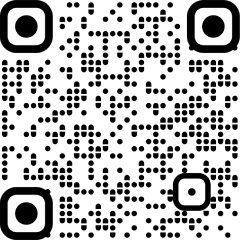The Union Budget 2025-26 focuses on consumption as an engine of growth. The fiscal policies encompass several tools for instruments, for diving the growth engine on both demand as well as supply side. “Democracy, Demography, and Demand are the key support pillars in our journey towards Viksit BharatT,” said the Finance Minister while addressing the parliament for the Union Budget 2025-26.
The rationalization of customs for promoting local manufacturing, streamlining processes for ease of compliance burden, and relief to the middle class are the highlights of the Union Budget.
Personal Income Tax
The Union Budget 2025-26 proposes no income tax payable up to an income of ₹ 12 lakh under the new tax regime. The limit will be ₹ 12.75 lakh for salaried taxpayers due to the standard deduction of ₹ 75,000. “I am now happy to announce that there will be no income tax payable up to income of ₹12 lakh under the new regime. This limit will be ₹12.75 lakh for salaried taxpayers, due to a standard deduction of ₹75,000,” said the Finance Minister while announcing no income tax up to ₹ 12 lakh.
The relief in income tax is aimed at stimulating demand and aiding the growth engine. The biting inflation ensured that relief was around the corner, with the budget finding an equitable balance between the demand and consumption side. “The Government in its endeavor to induce higher consumption levels in the economy, has dolled out tax reliefs to provide higher post-tax take-home income for the taxpayers,” said Amit Gupta, Partner at Saraf and Partners.
The announcements related to the new tax regime also imply a slow death of the old tax regime, with the Union Budget making the new tax regime more lucrative and the old tax-tax regime left as it is. “The Legislator’s thrust to garner higher adoption of the New Tax Regime is also apparent in the latest Budget wherein there is no tinkering for the tax rates under the Old Regime but the New Regime under Section 115BAC of the Income-tax statute has gone for a complete overhaul w.e.f. April 1, 2026,” he added.
He highlights that the tax slabs have been widened further with the enhancement of the basic exemption limit from ₹ 2,50,000 to ₹ 4,00,000; Further, buckets of tax rates have been incorporated into the progressive income slabs before the highest 30% tax rate becomes applicable.
The most discussed tax relief has been proposed through the enhancement of the Tax Rebate enshrined in Section 87A of the Income tax statute from the existing ₹ 700,000 to ₹ 12,00,0000 pursuant to which for Taxpayers opting for the New Tax regime under Section 115AC of the ITA incomes upto ₹ 12,00,000 will not entail any tax outlay by virtue of specific tax rebate of the lower of applicable tax or ₹ 60,000.Amit Gupta, Partner at Saraf and Partners
The Union Budget proposed changing of the slabs and rates across the existing tax rates to benefit all taxpayers. “The new structure will substantially reduce the taxes of the middle class and leave more money in their hands, boosting household consumption, savings, and investment,” said the Finance Minister while announcing the tax break.A tax payer in the new regime with an income of ₹ 12 lakh will get a benefit of ₹ 80,000 in tax (which is 100% of tax payable as per existing rates). A person having an income of ₹ 18 lakh will get a benefit of ₹70,000 in tax (30% of tax payable as per existing rates).
A person with an income of ₹25 lakh gets a benefit of ₹ 1,10,000 (25% of his tax payable as per existing rates).
“In my view, the latest personal tax reforms are a welcome step towards easing the tax burden and simplifying compliance. The increase in the tax-free income threshold to INR 12 lakh under the new regime provides much-needed relief to middle-class taxpayers,” said Advocate Nitin Parihar.


